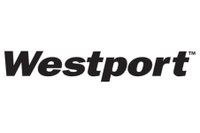
The Investing News Network had the chance to speak with Robin Eves, president and CEO of Clean Coal Technologies, about the company’s technology and what cleaner coal means for the future of power generation.
According to estimates from the International Energy Agency (IEA), roughly 41 percent of the world’s electricity comes from coal-fired power plants. However, moving forward, cleaner coal technologies will be needed in order to keep emissions down and fight climate change.
Carbon capture and storage technologies have gotten plenty of attention as of late, especially with SaskPower opening the first commercial scale carbon capture and storage facility in October 2014. However, the CBC reported a year later that the plant was facing a number of technical problems that prevented it from running at full capacity. As per a December article from the Regina Leader Post, many of these issues have since been resolved, and Saskpower is aiming to capture 800,000 tonnes of carbon dioxide this year.
Another way to clean up coal is to treat the energy fuel before it heads into power plants. That’s a strategy being pursued by Clean Coal Technologies (OTCMKTS:CCTC), which is focused on developing its Pristine M coal dehydration technology. The process upgrades coal prior to combustion, which the company says reduces harmful pollutants while eliminating moisture and reducing transportation costs.
The Investing News Network had the chance to speak with Robin Eves, president and CEO of Clean Coal Technologies, about the company’s technology and what cleaner coal means for the future of power generation.
A different approach to coal dehydration
“You don’t burn raw crude oil, you refine it,” Eves stated, “so I don’t understand why people want to burn raw coal and create the problem and then try to clean it up.”
That neatly sums up why he’s a fan of precombustion solutions, and why he’s pushed ahead with that mission at Clean Coal Technologies even though it’s a space in which many others have tried and failed.
Eves stated that previous coal upgrading technologies “really did very little because they assumed all coal was the same.” However, Clean Coal Technologies has taken a bit of a different approach.
SAIC (NYSE:SAIC) senior scientist Dr. Dilo Paul, an advisor to CCT and one of the world’s preeminent coal scientists, has helped to test the company’s three patented coal dehydration technologies with approximately 40-50 different types of coal over the past 10 to 15 years.
Now, using its Pristine M process, the company has a two to three tonne per hour test unit that’s installed and operating at a coal fired power facility near Oklahoma. “This is the first time any technology of this kind has been allowed anywhere near a coal-fired power plant,” Eves said.
“They had to be very, very satisfied of the credibility of this technology,” he added.
And so far, the test unit has been a success; for the past three months, the unit has been operating smoothly. “So far, we can tell the world that we can safely dehydrate coal,” Eves said. More specifically, CCT can tailor the moisture levels in coal to the needs of its clients.
Furthermore, Pristine M removes most of the volatiles, or harmful pollutants, that reside in coal. Those substances are re-used as a coating for the coal once it’s gone through the Pristine M process. Dried coal looks a bit like pumice, Eves stated, and coating the coal allows it to be transported via rail and ocean barges without large amounts of coal ash being released.
“This is very, very important when transporting coal off land into ports because one of the big problems there has always been the ash, dirt and everything else,” he said.
What makes Pristine M different?
As Eves explained, Pristine M is a bit different than most precombustion coal upgrading processes.
“Firstly, we don’t crush the coal,” he said. “Most other processes crush the coal, and then they have to do something at the other end to briquette it.” To be sure, cutting out that extra step is a boon for the production process.
On top of that, Pristine M plants have been designed in a modular manner, meaning that companies may slowly add capacity as needed, taking out much of the technical and financial risk commonly attached to such projects.
“When you scale up from a small pilot plant to one to two million tonne plant, you have still two to three years of technology risk and financial risk. But you absolutely don’t know until that plant is built whether it’s going to work or not,” Eves said. “And you don’t know really what the final cost is going to be. We cut most of that risk out.”
Eves also stated that plants may put different types of coal through different Pristine M modules, and that the modules operate independently, meaning that operations don’t grind to a halt if one of them breaks down.
Overall, the first module of a 30 tonne per hour Pristine M plant produced in the US would likely cost about $17 million. However, it’s only the first module that’s this expensive. “This module is what you might call the queen module, because it has the burners and the dryers to run the other three or four modules we put on,” Eves said.
Subsequent modules are expected to cost between $6-8 million, with operating costs coming around at about $7.50 per tonne. However, Eves added that both the modules and operating costs would be cheaper in places like Indonesia or Vietnam, where labour costs are lower.
The future of coal
As mentioned above, Eves is a big believer in cleaning up coal, but he believes it needs to be done the right way.
“I have a big problem with carbon capture technology,” he said, “purely and simply because, where do you store this? It’s got to go underground. Nobody knows really what the long term ramifications of storing it underground are going to be.”
Eves stressed that Pristine M doesn’t directly reduce the carbon footprint of coal. Power plants will, of course, still be burning the fossil fuel.
However, it’s worth noting that as a consequence of using Pristine M, power plants will use less coal, more efficient coal, and cleaner coal. In other words, Pristine M does make a difference overall.
For Eves, that’s a much more realistic and effective starting point than aiming to cut out coal completely. “The way to reduce our carbon footprint is by improveing the efficiency of all fuels, and by every single person doing their own bit to reduce their own carbon footprint,” he said.
And while some solutions might be years away, he argued that CCT “can contribute a tremendous amount of impact in terms of both environmental and fuel efficiency right away.”
What’s next?
In terms of what investors can look forward to in the near term, Eves stated that a “very diverse group of potential customers and strategic partners” will be coming to visit the plant.
“We’re a very short curve now into commericalization, but at the same time we want to do it responsibly. We want to choose our partners well to begin with,” he said. Still, he added that the company could “very feasibly sign some commercial contracts within the next 8 to ten weeks.”
Clean Coal Technologies has a market capitalization of $44.72 million and has traded within a 52 week average of $0.07 and $1.09 per share. The company is currently trading at $0.39, up 447 percent over the past year.
Securities Disclosure: I, Teresa Matich, hold no direct investment interest in any of the companies mentioned in this article.
Editorial Disclosure: The Investing News Network does not guarantee the accuracy or thoroughness of the information reported in the interviews it conducts. The opinions expressed in these interviews do not reflect the opinions of the Investing News Network and do not constitute investment advice. All readers are encouraged to perform their own due diligence.
Editor’s note: This article was updated on March 24 to correct information regarding Boundary Dam. A previous version of the article stated that the project was still operating at 40 percent capacity.




